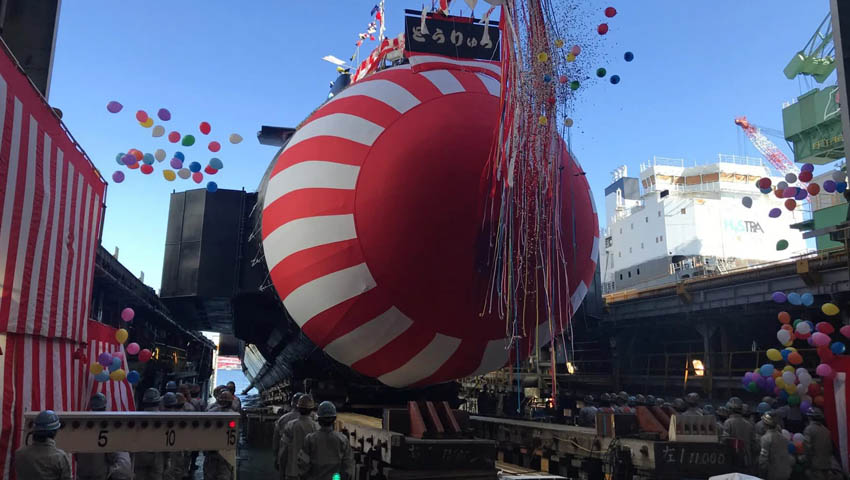Kawasaki Heavy Industries has debuted its latest Soryu Class diesel submarine for the Japan Maritime Self-Defense Force, which is slated for delivery in 2021.
To continue reading the rest of this article, please log in.
Create free account to get unlimited news articles and more!
The 84 metre-long boat is the second of the Soryu Class that is equipped with lithium-ion batteries, and is the 12th and final submarine of the class.
Laid down in January 2017, Toryu is expected to enter service with the JMSDF in March 2021.
KHI has built six of the Soryu Class boats, and is the 29th postwar submarine built by the company at its Kobe works, one of Japan’s largest shipyards.
Japan is the first country in the world to equip attack submarines with lithium-ion batteries in place of lead-acid batteries, due to the former’s capability to store much more energy.
Almost doubling the electric storage capacity of the lead-acid batteries, the lithium-ion variants improve underwater endurance due to the superior recharge capability than the former air-independent propulsion (AIP) Sterling engines and their fuel cells that were used.
The batteries have been mounted on Toryu and Oryu, the final two Soryu Class boats for the Japan Maritime Self-Defense Force.
The previous submarines in the class have been fitted with two Kawasaki 12V 25/25 diesel generators and four Kawasaki Kockums V4-275R Stirling AIP engines, and use lead-acid batteries for energy storage, with the class able to reach 20 knots underwater and 12 knots on the surface.
The Soryu Class submarines were offered to Australia as an option for replacing the Royal Australian Navy’s Collins Class submarines, which was eventually won by Naval Group’s Shortfin Barracuda design.
Other nations such as India and Taiwan, however, have expressed interest in purchasing Soryu Class submarines, with former defence minister David Johnston describing the boats as “extremely impressive”.
“The Japanese design is the nearest design that comes to what our requirements are,” Minister Johnston said in 2014.
“There’s no other diesel electric sub of that size and dimension. It’s extremely impressive that they can get a boat of that size – 4,200 tonnes – through the water with diesel electric power.”
Questions have been asked recently about the timeline of delivery for Australia’s future submarine program, with the first of class due to be delivered in the mid-2030s, at which point HMAS Collins will be over 40 years old.
Tempers flared at Senate estimates a few weeks ago when senator Rex Patrick questioned the decision to push back the system requirements review of the submarines, which marked the first official delay of the future submarine program schedule.
“This is a project running late, Minister, and if you don’t recognise that, you shouldn’t be in the chair,” Senator Patrick levelled at Defence Minister Linda Reynolds on 23 October.
Despite the early setback, Rear Admiral Greg Sammut reassured Senate estimates that the Attack Class is still on track to enter service in the mid-2030s, as per the original timeline.
“We have not changed delivery date for the future submarine,” he said.
Question marks over the timeline of the Attack Class program have long persisted, particularly due to the three-year delay of France’s Barracuda nuclear submarines, which are also being built by Naval Group.
Originally slated for delivery in 2016-17, the first Barracuda was launched in July this year, and is expected to be commissioned next year.
However, Naval Group has insisted that past mistakes will not be repeated with Australia’s Attack Class, due to lessons learnt during the Barracuda program.

 Login
Login







